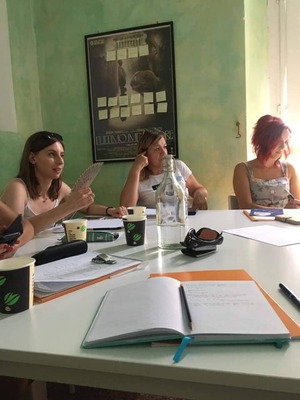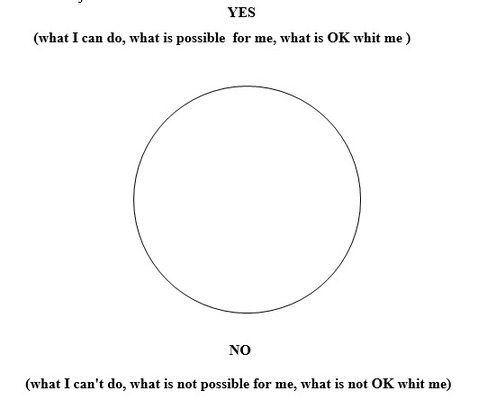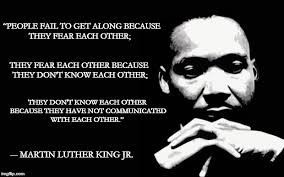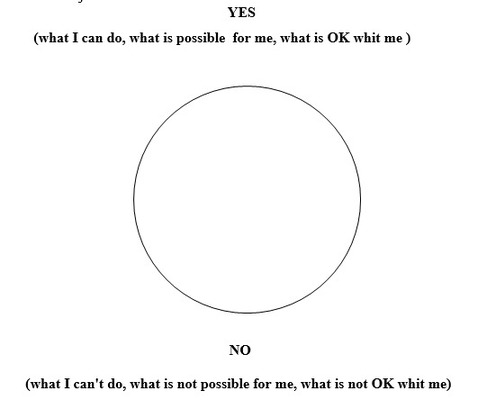Drugi dan tečaja 02.07.2019.
Drugi dan tečaja započeli smo razgovorom u manjim grupama na temu: „Happines is reality minus expectations“. Zadatak je bio međusobnim razgovorom zauzeti zajednički stav unutar grupe slažemo li se ili se ne slažemo s ovom tvrdnjom te isti obrazložiti ostalim grupama.
Današnja predavanja bila su: „Healthy boundaries for staying well“, The meaning behind difficult behavior“ i „Positive Communication: more than smiles“.

Pri postavljanju zdravih granica naučili smo vježbu u kojoj su zdrave granice prikazane poput vlastitog vrta koji svatko ograđuje te uređuje unutrašnji prostor prema svojim željama. U našem profesionalnom radu važno je postaviti sebi pitanje o tome što ostavljamo izvan ulaza zamišljenog vrta. Uslijedilo je promišljanje i kratak razgovor o toj temi.
Praktični rad, primjer:
izradili smo „My personal compass“ na način da je svatko od nas nacrtao krug koji smo podijelili na dva dijela:

U krug pod nazivom „moj osobni kompas“ svatko od nas upisao je u gornji dio kruga sve ono što nam je prihvatljivo i što možemo učiniti vezano uz naš rad u školi, a u donji dio kruga sve ono što nam je neprihvatljivo i što ne možemo učiniti.
Učenje o temi The meaning behind difficult behavior“ počeli smo citatom Martina Luthera Kinga Jr. „Ljudi se ne slažu jer se međusobno boje; međusobno se boje jer se ne poznaju; ne poznaju jedni druge jer nisu međusobno komunicirali. ".

U sklopu ove teme naučili smo kako komunikacija uključuje različite složene vještine. Pri komunikaciji koristimo govorni ili pisani jezik, koristimo ton, brzinu, intonaciju, prostor, izraze lica,govor tijela, stanke, tišinu, emocionalnu svijest i upravljanje.
U komunikaciji s drugim osobama susrećemo se i s ljutnjom. Ona je često najvidljivija od jakih emocija te se u komunikaciji uglavnom usredotočujemo na nju. Međutim, ljutnja je emocija kuju vidimo nasuprot sebi, a u stvarnosti to je često samo vrh ledenog brijega.

Ispod površine ljutnje često se nalazi ono što osoba pokušava sakriti od sebe i/ili drugih, a to mogu biti: strah, nedostatak ljubavi, usamljenost, bespomoćnost, tuga, sram, samoća, strah od gubitka kontrole, povrijeđenost, strah od gubitka drage osobe, nisko samopoštovanje te niz drugih negativnih emocija.
Nadalje, učili smo o vrstama komunikacija: pasivnoj, agresivnoj, pasivno agresivnoj i asertivnoj komunikaciji te njihovim obilježjima i značajkama.
Nakon predavanja uslijedile su prezentacije o školama i područjima iz kojih polaznici dolaze, a održali su ih polaznici tečaja iz Danske i Poljske.
Second day of the course, July 2, 2019
The second day of the course started with a small group discussion on "Happiness is reality minus expectations". The task was to discuss with one another a common position within the group whether we agree or disagree with this statement and justify the same to other groups.
Today's lectures were: "Healthy boundaries for staying well", "The meaning behind difficult behavior" and "Positive Communication: more than smiles".
When setting healthy boundaries, we learned an exercise in which healthy boundaries are depicted as one's own garden that fences everyone and arranges the interior space according to their wishes. In our professional work it is important to ask ourselves what we leave outside the entrance of the imaginary garden. This was followed by a reflection and a brief discussion on the subject.
Practical work, example:
we created “My personal compass” in such a way that each of us drew a circle that we divided into two parts:

In the circle called "My personal compass", each of us has entered into the upper part of the circle all that is acceptable to us and what we can do about our work in school, and in the lower part of the circle all that is unacceptable and what we cannot do.
Learning about The Meaning Behind Difficult Behavior “we started with a quote from Martin Luther King Jr. "People do not agree because they are afraid of each other; they are afraid of each other because they do not know each other; they do not know each other because they did not communicate with each other. "
As part of this topic, we learned that communication involves various complex skills. In communication we use spoken or written language, we use tone, speed, intonation, space, facial expressions, body language, pauses, silence, emotional awareness and control.
In communication with other people we also encounter anger. It is often mostly visible in strong emotion, and in communication we mostly focus on it. However, anger is an emotion we see across from ourselves in others, and in reality it is often just the tip of the iceberg.
Below the surface of anger is often what the person is trying to hide from himself and / or others, which can be: fear, lack of love, loneliness, helplessness, sadness, shame, loneliness, fear of losing control, hurt, fear of losing a loved one , low self-esteem and a number of other negative emotions.
Furthermore, we learned about the types of communications: passive, aggressive, passive-aggressive and assertive communication and their characteristics and features.
The lectures were followed by presentations about the schools and the areas from which the attendants come from, and were given by course participants from Denmark and Poland.